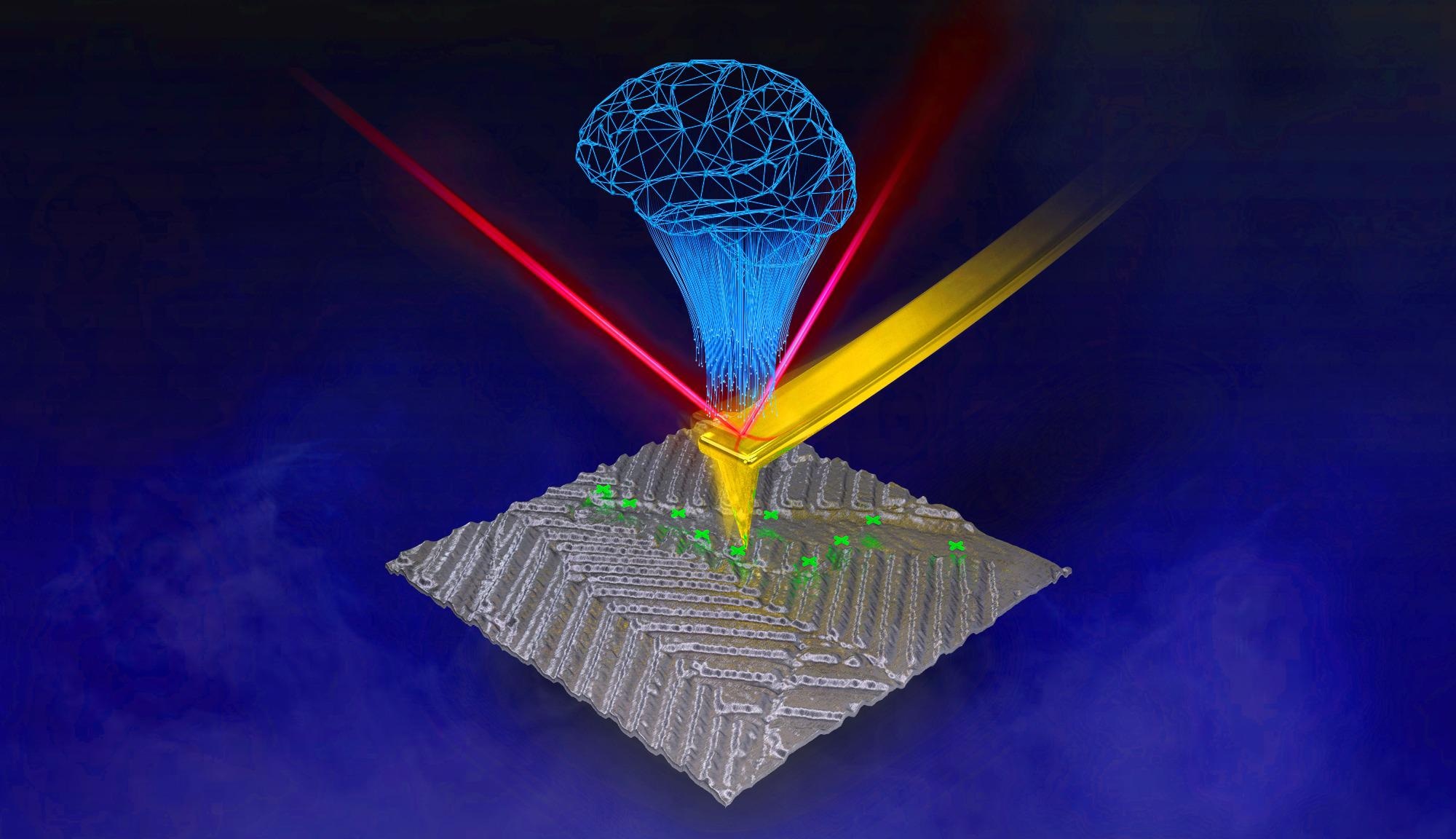Reviewed by Alex SmithMay 10 2022
Scientists at the Department of Energy’s Oak Ridge National Laboratory (ORNL) are programming microscopes to stimulate discoveries using an intuitive algorithm, formulated at ORNL’s Center for Nanophase Materials Sciences (CNMS), that could facilitate advances in new materials for sensing, energy technologies and computing.
 A smart approach to microscopy and imaging developed at Oak Ridge National Laboratory could drive discoveries in materials for future technologies. Image Credit: Adam Malin/ORNL, U.S. Dept. of Energy.
A smart approach to microscopy and imaging developed at Oak Ridge National Laboratory could drive discoveries in materials for future technologies. Image Credit: Adam Malin/ORNL, U.S. Dept. of Energy.
There are so many potential materials, some of which we cannot study at all with conventional tools, that need more efficient and systematic approaches to design and synthesize. We can use smart automation to access unexplored materials as well as create a shareable, reproducible path to discoveries that have not previously been possible.
Maxim Ziatdinov, Computational Sciences and Engineering Division and CNMS, ORNL
The method, reported in Nature Machine Intelligence, integrates machine learning and physics to automate experiments based on microscopy designed to explore the functional properties of materials at the nanometer scale.
Functional materials are receptive to stimuli such as electricity or heat and are designed to support both ordinary and upcoming technologies, ranging from solar cells and computers to shape-memory materials and artificial muscles.
Their exclusive properties are linked to atomic structures and microstructures that can be perceived with advanced microscopy. Nevertheless, the challenge has been to create efficient techniques to find regions of interest where these properties originate from and can be examined.
Scanning probe microscopy is a vital tool for investigating the structure–property relationships of functional materials. Instruments scan a material’s surface with an atomically sharp probe to chart out the structure at the nanoscale — the length of one billionth of a meter.
They can also sense responses to a variety of stimuli, offering insights into core mechanisms of polarization switching, plastic deformation, electrochemical reactivity or quantum phenomena.
Present-day microscopes can carry out a point-by-point scan of a square grid (nanometer size), but the process can be laboriously slow, with measurements gathered over days for just one material.
“The interesting physical phenomena are often only manifested in a small number of spatial locations and tied to specific but unknown structural elements. While we typically have an idea of what will be the characteristic features of physical phenomena we aim to discover, pinpointing these regions of interest efficiently is a major bottleneck,” said former ORNL CNMS researcher and lead author Sergei Kalinin, now at the University of Tennessee, Knoxville.
“Our goal is to teach microscopes to seek regions with interesting physics actively and in a manner much more efficient than performing a grid search,” Sergei Kalinin added.
Researchers have turned towards machine learning and artificial intelligence (AI) to surpass this challenge, but traditional algorithms necessitate huge, human-coded datasets and may not even save time.
For a smarter method toward automation, the ORNL workflow integrates human-based physical reasoning into machine learning approaches and uses miniature datasets — images attained from under 1% of the sample — as a preliminary point. The algorithm chooses points of interest according to what it learns inside the experiment and on knowledge from beyond the experiment.
As a proof of concept, a workflow was shown using scanning probe microscopy and was applied to well-explored ferroelectric materials. Ferroelectrics are a type of functional material possessing a reorientable surface charge that can be exploited for actuation, computing and sensing applications.
Researchers are keen to understand the connection between the amount of energy or data these materials can store and the local domain structure controlling this property. The automated experiment detected the precise topological defects for which these factors are augmented.
The takeaway is that the workflow was applied to material systems familiar to the research community and made a fundamental finding, something not previously known, very quickly—in this case, within a few hours.
Maxim Ziatdinov, Computational Sciences and Engineering Division and CNMS, ORNL
Results were quicker — by orders of magnitude — than traditional workflows and signify a new path in smart automation.
We wanted to move away from training computers exclusively on data from previous experiments and instead teach computers how to think like researchers and learn on the fly. Our approach is inspired by human intuition and recognizes that many material discoveries have been made through the trial and error of researchers who rely on their expertise and experience to guess where to look.
Maxim Ziatdinov, Researcher, Computational Sciences and Engineering Division and CNMS, ORNL
ORNL’s Yongtao Liu was in charge of the technical challenge of getting the algorithm to work on an operational microscope at the CNMS.
This is not an off-the-shelf capability, and a lot of work goes into connecting the hardware and software. We focused on scanning probe microscopy, but the setup can be applied to other experimental imaging and spectroscopy approaches accessible to the broader user community.
Yongtao Liu, Researcher, CNMS, ORNL
The research received support from the CNMS, which is a DOE Office of Science user facility, and the Center for 3D Ferroelectric Microelectronics, which is an Energy Frontier Research Center led by Pennsylvania State University and aided by the DOE Office of Science.
Journal Reference:
Liu, Y., et al. (2022) Experimental discovery of structure–property relationships in ferroelectric materials via active learning. Nature Machine Intelligence. doi.org/10.1038/s42256-022-00460-0.